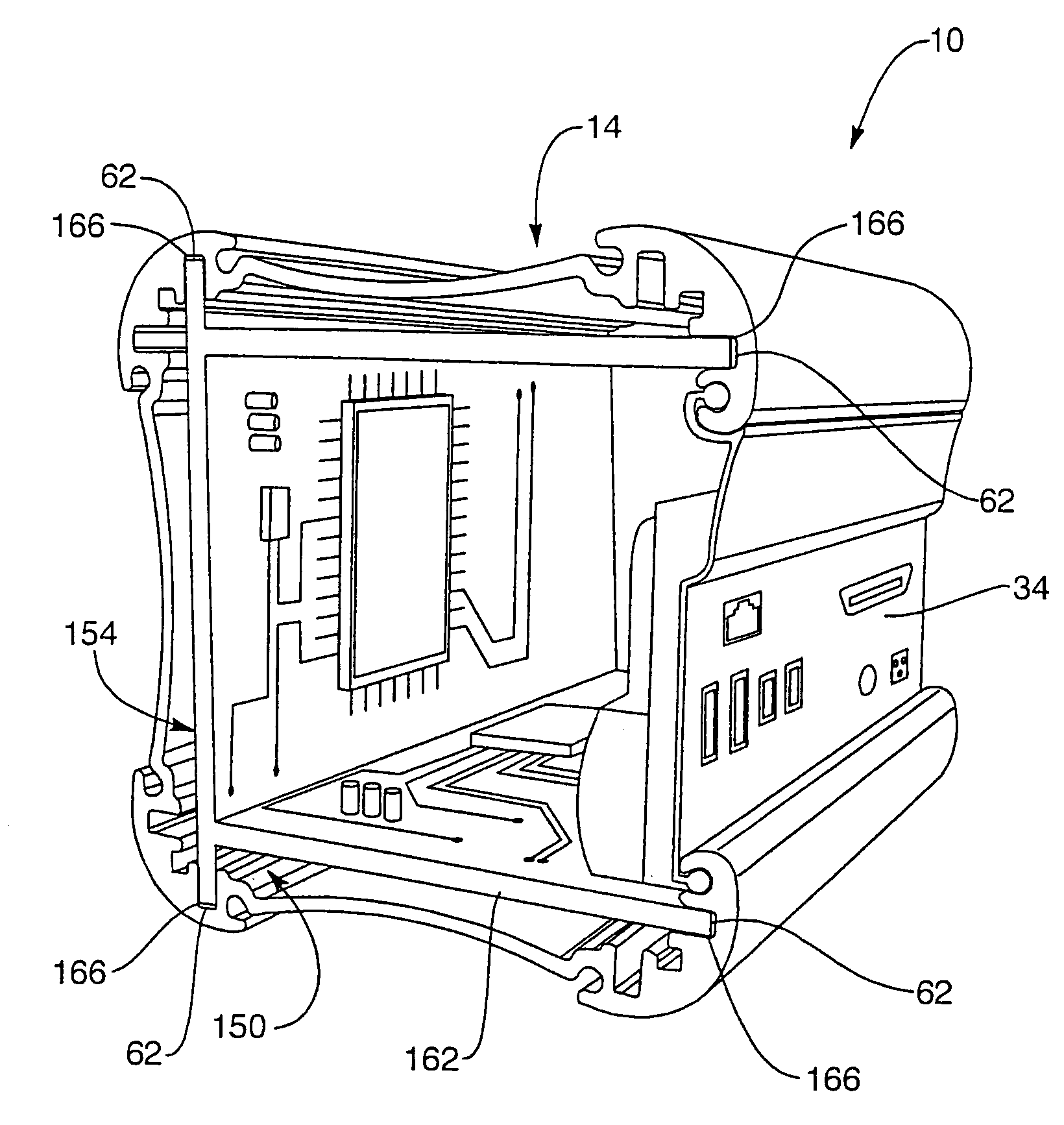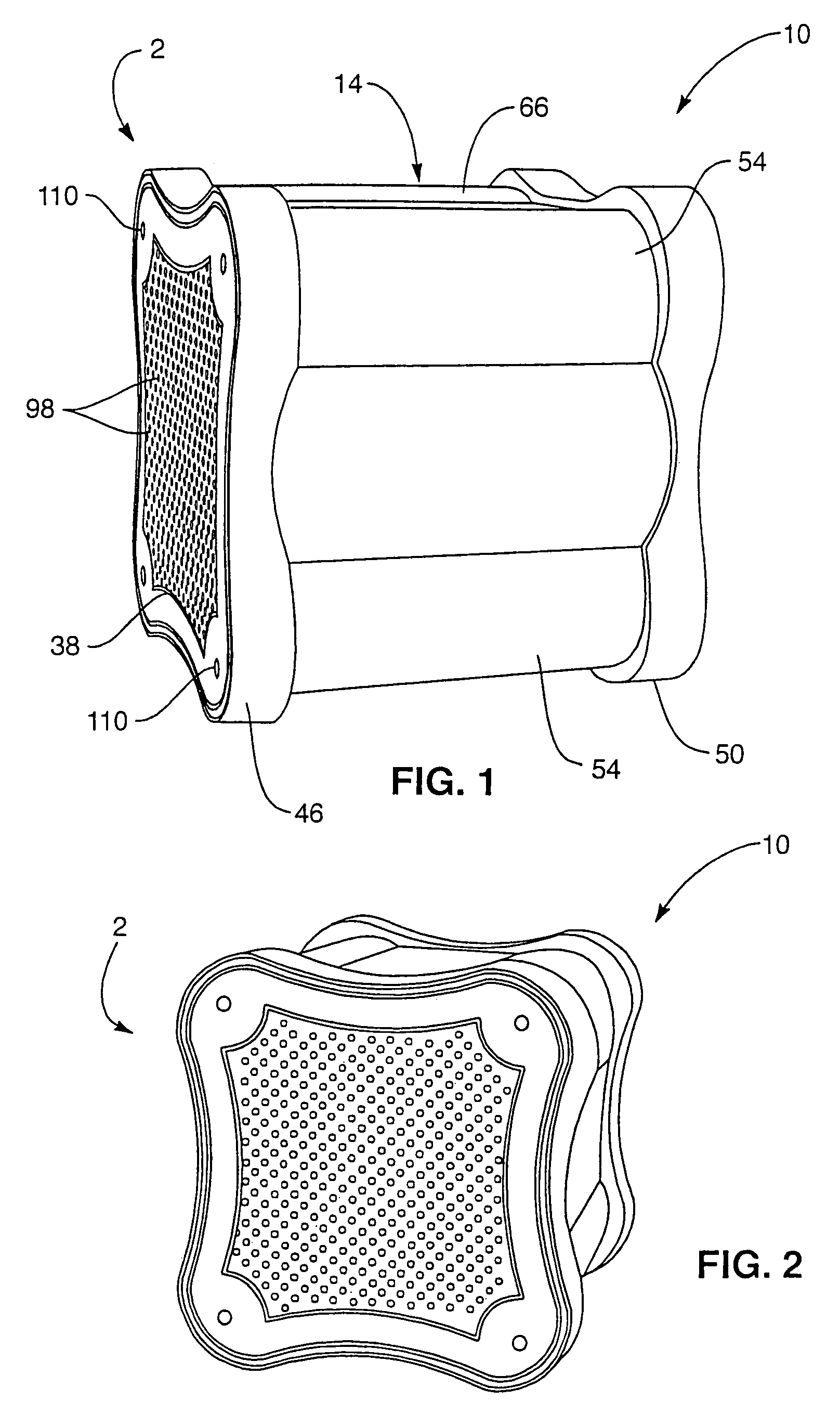Robust customizable computer processing system
a computer processing system and flexible technology, applied in the field of computer processing systems, can solve the problems of large, bulky encasement modules that support processing and other components, small, powerful modern systems in use today are virtually incomparable to their ancestral counterparts, and achieve robust customizable enterprises, enhanced processing capabilities, and enhanced platform usefulness
- Summary
- Abstract
- Description
- Claims
- Application Information
AI Technical Summary
Benefits of technology
Problems solved by technology
Method used
Image
Examples
example one
[0135]Although it is contemplated that the processing control unit of the present invention will be adaptable to any conceivable environment, one of its primary enterprise applications will still be a computer or computing system where it will function as a normal computer system or workstation for the home or office. In a home or office setting, the processing control unit provides the ability to free up much needed space, to be camouflaged, or to be hidden from view altogether. The size and weight of the unit make it very portable and easy to move around, as well as providing space benefits not available with prior related computer encasements.
[0136]In addition, due to the processing control unit's ability to process couple to another processing control unit to achieve scaled processing, conventional computer systems, such as those built for the telecommunications industry, can be eliminated. For example, instead of housing several servers in a building at a telecommunications tow...
example two
[0139]With reference to FIG. 14, shown is another robust customizable computing system in the form of a computer to be utilized within a workstation environment. This embodiment, however, is different from the embodiment shown in FIG. 13 in that processing control unit 2 functions as physical support for one or more external objects 180, namely monitor 230, extension arm 234, and a base or stand 238. Furthermore, processing control unit 2 is operably connected to external object 180 in an electrical as well as a physical manner. Specifically, processing control unit 2 functions as a load bearing member in addition to being the processing component of the computer and being electrically connected to the monitor and any other peripheral computing devices (e.g., a mouse and keyboard, etc.). In this exemplary embodiment, processing control unit 2 is a load bearing member that supports monitor 230 in a suspended state. In addition, processing control unit 2 is coupled to extension arm 23...
example three
[0140]FIGS. 15-A and 15-B illustrate a robust customizable computing system similar to the system or embodiment described in FIG. 14, only the system or embodiments in FIGS. 15-A and 15-B illustrate processing control unit 2 operating or functioning as the control center for a desktop computer system having snap-on peripheral devices. As shown, peripheral devices may be supported by processing control unit 2 through external connection to processing control unit 2. In the exemplary embodiment shown in the Figures, the present invention contemplates using snap-on peripheral devices that essentially snap on to a universal peripheral panel 250 that is plugged into and electrically coupled to processing control unit 2 and the specific interconnects or peripherals transports via the dynamic back plane of processing control unit 2. In this embodiment, universal peripherals panel 250 is essentially the back portion of a monitor or LCD screen physically and electrically supported by process...
PUM
 Login to View More
Login to View More Abstract
Description
Claims
Application Information
 Login to View More
Login to View More - R&D Engineer
- R&D Manager
- IP Professional
- Industry Leading Data Capabilities
- Powerful AI technology
- Patent DNA Extraction
Browse by: Latest US Patents, China's latest patents, Technical Efficacy Thesaurus, Application Domain, Technology Topic, Popular Technical Reports.
© 2024 PatSnap. All rights reserved.Legal|Privacy policy|Modern Slavery Act Transparency Statement|Sitemap|About US| Contact US: help@patsnap.com










